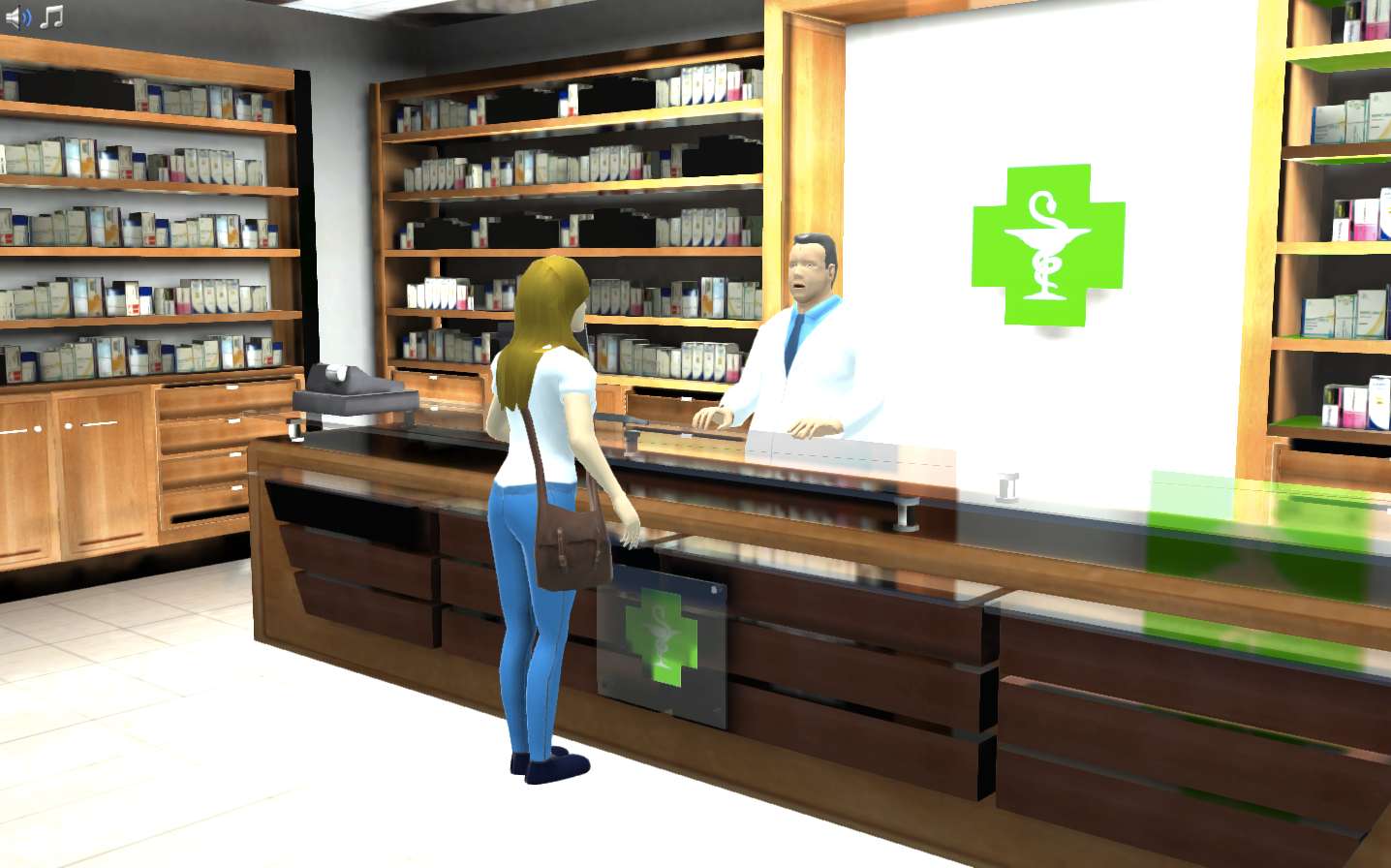Heading 1
Heading 2
Heading 3
Heading 4
Heading 5
Heading 6
Lorem ipsum dolor sit amet, consectetur adipiscing elit, sed do eiusmod tempor incididunt ut labore et dolore magna aliqua. Ut enim ad minim veniam, quis nostrud exercitation ullamco laboris nisi ut aliquip ex ea commodo consequat. Duis aute irure dolor in reprehenderit in voluptate velit esse cillum dolore eu fugiat nulla pariatur.
Block quote
Ordered list
- Item 1
- Item 2
- Item 3
Unordered list
- Item A
- Item B
- Item C
Bold text
Emphasis
Superscript
Subscript
About This Simulation
Learn how different factors such as heat and humidity can alter drug stability. Identify the components of the HPLC machine and use it to separate and measure the different compounds of a medicine.
Learning Objectives
- Understand the different compartments of an HPLC machine and functions
- Understand the principles of HPLC separation
- Understand the lipophilic interaction between the analyte and the mobile and stationary phase
- Understand the different changes in parameters (such as the column, mobile phase, temperature etc.) and its effects on analyte separation and concentration measurements
About This Simulation
Lab Techniques
- HPLC
Related Standards
- HS-PS1-3, HS-PS2-6
- 3.9 Separation of Solutions and Mixtures Chromatography
- B.9 Biological Pigments
Learn More About This Simulation
Explore the HPLC machine by taking a look inside it. Find the different components including the sample injection station, column, pumps and UV detector, and learn all about the principles of liquid chromatography, specifically HPLC.
Understanding High Performance Liquid Chromatography
In the HPLC simulation, your first task is to select different mobile phases and different columns to run your experiment. You will then separate the components of a drug and measure concentrations. Next, compare the separation profile using different mobile phases and columns. During the experiment, you will be able to visualize the lipophilic interaction between analyte and both the stationary and mobile phase by watching a 3D animation. Quiz questions throughout the lab check will check your understanding of the HPLC technique.
Drug stability analysis
After completing the first part of the HPLC lab, you will learn how to analyze drugs that have been stored in different conditions and measure and compare the active ingredient’s concentration.
About the HPLC lab
The HPLC Lab is constructed with specific detail and information that can be beneficial for anyone pursuing pharmaceutical studies. Additionally, it can be applied to any area of study that uses chromatography techniques such as biology and biochemistry. Chromatography is an important technique used by pharmacists, and drug stability is an important issue that a pharmacist must be aware of. This lab combines the technique and application.
For Science Programs Providing a Learning Advantage
Boost STEM Pass Rates
Boost Learning with Fun
75% of students show high engagement and improved grades with Labster
Discover Simulations That Match Your Syllabus
Easily bolster your learning objectives with relevant, interactive content
Place Students in the Shoes of Real Scientists
Practice a lab procedure or visualize theory through narrative-driven scenarios


FAQs
Find answers to frequently asked questions.
Heading 1
Heading 2
Heading 3
Heading 4
Heading 5
Heading 6
Lorem ipsum dolor sit amet, consectetur adipiscing elit, sed do eiusmod tempor incididunt ut labore et dolore magna aliqua. Ut enim ad minim veniam, quis nostrud exercitation ullamco laboris nisi ut aliquip ex ea commodo consequat. Duis aute irure dolor in reprehenderit in voluptate velit esse cillum dolore eu fugiat nulla pariatur.
Block quote
Ordered list
- Item 1
- Item 2
- Item 3
Unordered list
- Item A
- Item B
- Item C
Bold text
Emphasis
Superscript
Subscript
A Labster virtual lab is an interactive, multimedia assignment that students access right from their computers. Many Labster virtual labs prepare students for success in college by introducing foundational knowledge using multimedia visualizations that make it easier to understand complex concepts. Other Labster virtual labs prepare learners for careers in STEM labs by giving them realistic practice on lab techniques and procedures.
Labster’s virtual lab simulations are created by scientists and designed to maximize engagement and interactivity. Unlike watching a video or reading a textbook, Labster virtual labs are interactive. To make progress, students must think critically and solve a real-world problem. We believe that learning by doing makes STEM stick.
Yes, Labster is compatible with all major LMS (Learning Management Systems) including Blackboard, Canvas, D2L, Moodle, and many others. Students can access Labster like any other assignment. If your institution does not choose an LMS integration, students will log into Labster’s Course Manager once they have an account created. Your institution will decide which is the best access method.
Labster is available for purchase by instructors, faculty, and administrators at education institutions. Purchasing our starter package, Labster Explorer, can be done using a credit card if you are located in the USA, Canada, or Mexico. If you are outside of North America or are choosing a higher plan, please speak with a Labster sales representative. Compare plans.
Labster supports a wide range of STEM courses at the high school, college, and university level across fields in biology, chemistry, physics, and health sciences. You can identify topics for your courses by searching our Content Catalog.














